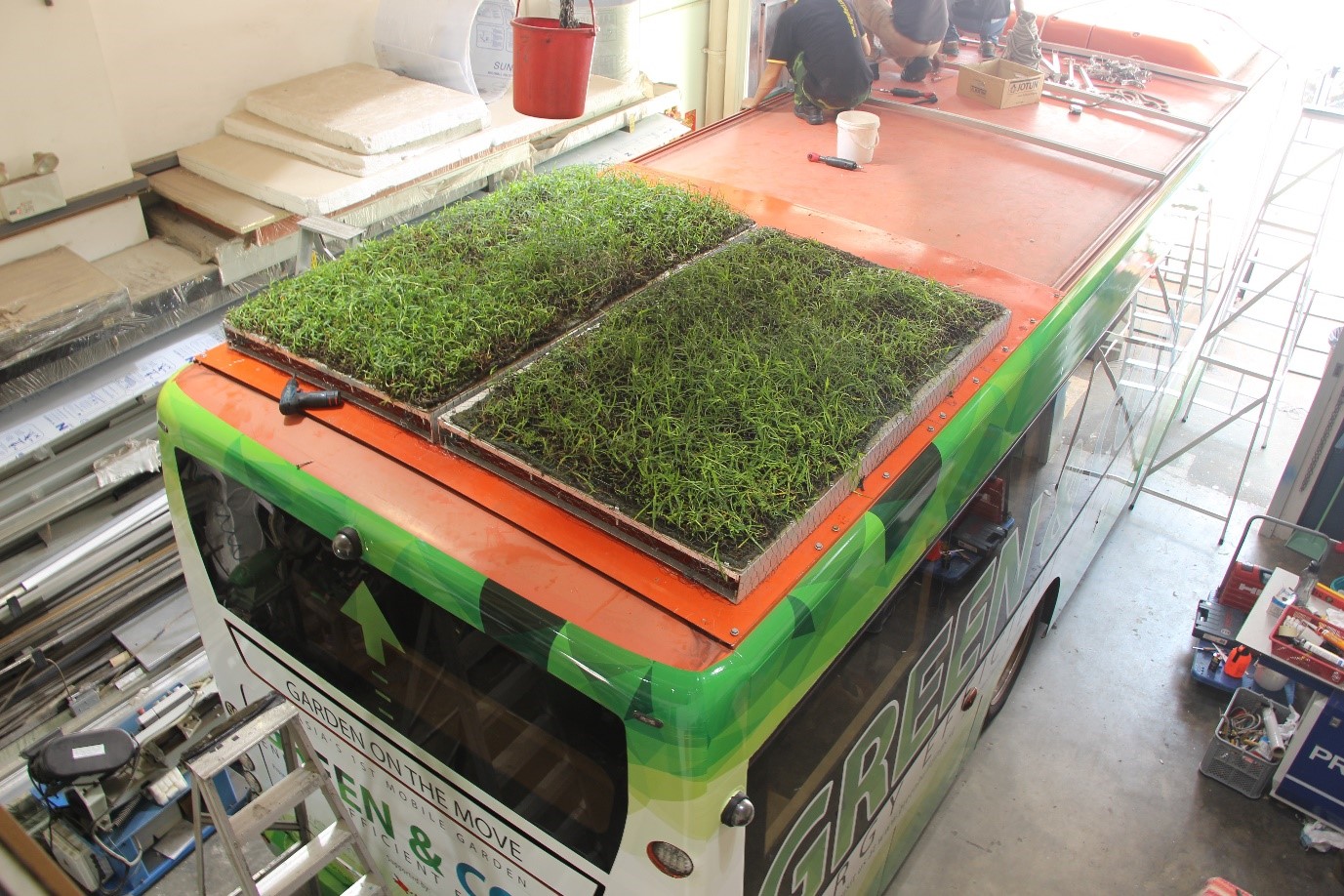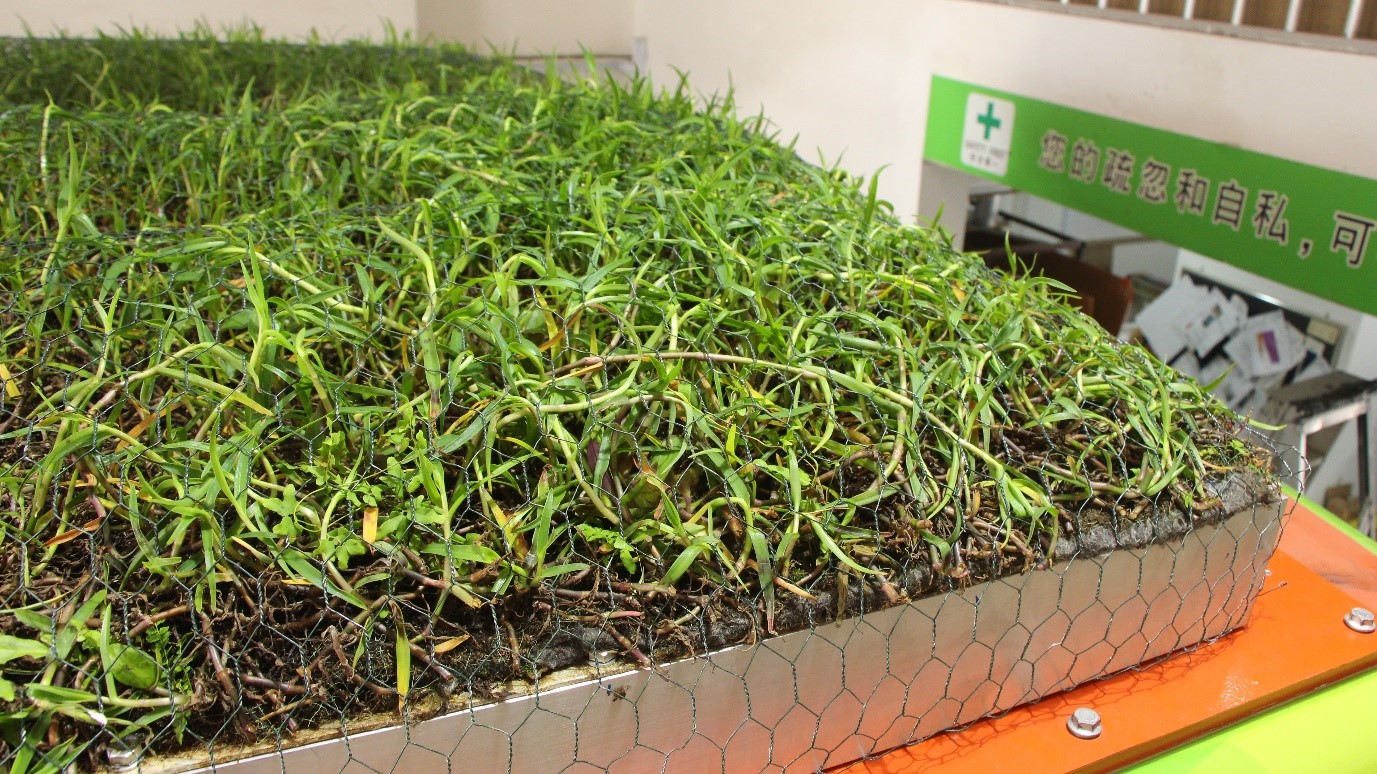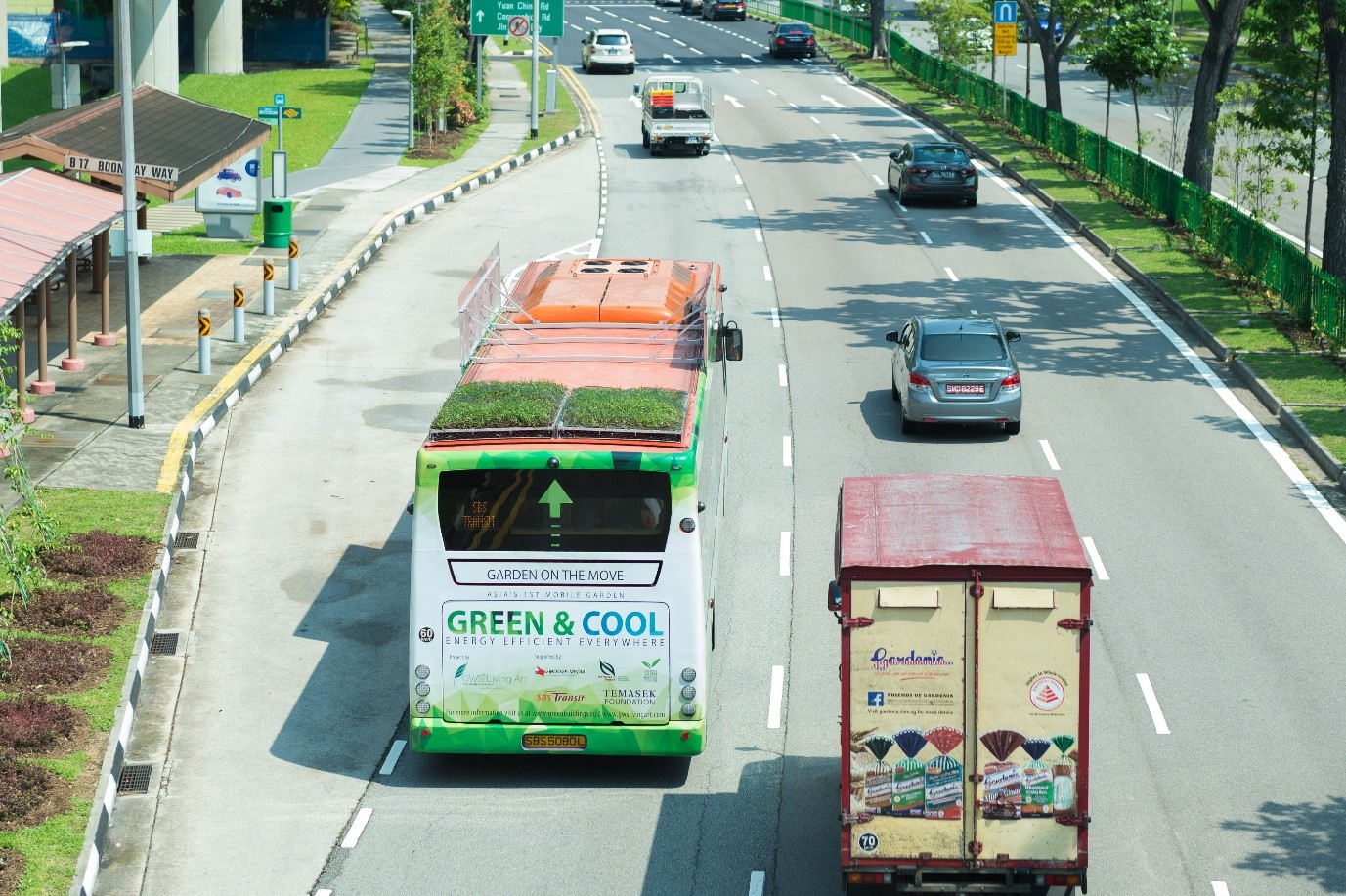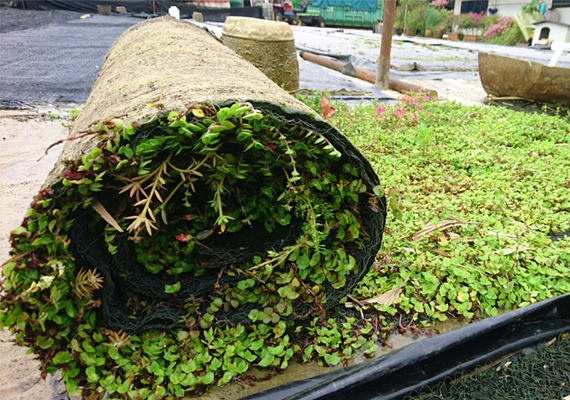- Sustainable Planet -
- 7mins -
- 779 views
Asia’s First Green Rooftop Buses Have Got The Internet (And Bees) Buzzing
Singapore’s ‘Garden on the Move’ initiative is part of a three-month study to confirm if green roofs can effectively reduce heat transmissions in public buses, thereby reducing fuel consumption for air-conditioning.
Garden on the Move: Asia’s very first buses with green rooftops may reduce reliance on air-con
In May this year, ‘Garden on the Move’ initiative was launched by GWS Living Art at the inaugural Singapore Garden Festival (SGF) Horticultural Show. This initiative sees Asia’s very first green roof bus in an effort to study the effects of green roofs on moving vehicles. Past studies on static green roofs reflected a positive correlation between the roof surface temperatures when fitted with green roofs and air conditioning’s energy savings within the buildings.

Green & Cool: Singaporean Buses’ Rooftop Gardens Cool Down Passengers Naturally
The ‘Garden on the Move’ initiative was started by GWS more than 2 years ago. Prior to this initiative, green roofs were primarily static systems. This immovability limited the ways in which their green roof systems could be implemented.
GWS founder, Zac Toh, sought to innovate and challenge the ways in which nature can be integrated into the urban landscape. This desire led to a 2-year journey of designing, prototyping and testing, as well as close collaboration with stakeholders in order to bring the green bus concept to fruition.
Past studies on immovable green roofs reflected a positive correlation between the roof surface temperatures when fitted with green roofs and air conditioning’s energy savings within the buildings.
In one study done by GWS alongside Kasetsart University in Thailand, GWS’s Gaiamat green roof system was found to have reduced the roof surface temperature by as much as 30° Celsius (86°F). Ambient room interior temperature also dropped by 3-4° Celsius (37-39°F) when installed on industrial buildings.
GWS say they are confident that this study will also yield valuable results and shed more light into the effects of green roofs on reducing heat transmissions.
A total of 10 buses were used in ‘Garden on the Move’ initiative. All buses are be fitted with GWS’s green roof systems as part of a three-month study to confirm if green roofs can effectively reduce heat transmissions in public buses.
For this study, data loggers were installed on strategic locations within and outside of the buses. Data will be collected every 10 minutes and overall change in temperature monitored. At the end of the study, the data will be tabulated and used to determine if green roofs can lead to reduction in fuel consumption for the air-conditioning in these green roofed buses.
GWS Living Art is a well-established landscape supplying company with nurseries in Singapore, Malaysia, Thailand and India, specialising in urban green technology that artistically integrates green living into modern constructions.
Source: GWS



Air-quality study throws spotlight on bus stops in Singapore
Increased pollution from buses while waiting at stops poses health risk, says research. Even without the haze shrouding Singapore, commuters waiting for a bus could be polluting their lungs. — reported StraitsTimes.
The tiny particles from vehicle emissions are smaller – and more toxic – than the PM2.5 pollutants dominant during periods of haze, a new study has shown.
"Waiting at the bus stop for only 10 minutes each time may seem innocuous. But these short exposures all add up," said researcher Erik Velasco, who led the research in 2016
"A commuter who takes a two-way trip by bus to work for five days per week is actually exposed to these participles for nearly seven hours per month and over three full days per year. This exposure can affect people with existing pulmonary and cardiovascular diseases, among others."
PM2.5 are pollutant particles measuring less than 2.5 microns in diameter – about a 30th the diameter of a human hair. They are hazardous because they are small enough to be breathed into the lungs and absorbed into the bloodstream.
Dr. Velasco, a research scientist from the Singapore-MIT Alliance for Research and Technology (Smart), has found that the particles commuters breathe in while waiting at a bus stop are even smaller – by about 100 times.
At a media briefing in 2016, he said a two-way bus journey five days a week could lead to a commuter inhaling about 3.5 times more tiny pollutant particles than at ambient level, which researchers measured at Fort Canning Park.
The findings were significant considering that travel on buses made up almost half of the 7.7 million public transport trips every day in 2014, said Dr. Velasco, citing Land Transport Authority (LTA) data.
Dr. Steve Yang, specialist in respiratory medicine and consultant at the Raffles Internal Medicine Centre at Raffles Hospital said the human body has no efficient way to remove particles smaller than 2.5 microns in diameter.
"Humans have developed ways to filter out particles 10 microns and above, which get trapped in the nose and throat and do not enter the lungs, but not the smaller particles," said Dr Yang, adding that people should not stand near idling buses.
Toxic ultrafine particles are formed when gases and particles from vehicle exhaust pipes react with each other in the air after they are discharged. Catalytic converters and filters in vehicles, while vastly improved over the years, are still unable to remove all the toxic particles and gases produced.
Source: StraitsTimes
DISCOVER WHAT HAPPENED WHEN ONE DUTCH CITY TRANSFORMED ITS BUS ? STOPS INTO BEE ? STOPS
In the Dutch city of Utrecht, 316 bus stops have now adopted the green roof concept, and bees are absolutely loving it! Not only do they look great, they also help capture fine dust, store rainwater and provide cooling in the summertime. Click here to learn more.

China leading the e-bus fleet revolution by a mile
The rest of the world will struggle for years to catch up with China’s rapid embrace of electric transit, reports Bloomberg.
In China, catching an electric bus wouldn’t be unusual at all. Of almost 425,000 e-buses in service worldwide at the end of last year, some 421,000 were in China. To put that in perspective, the entire US currently has a fleet of 300.
The global e-bus fleet grew about 32% in 2018, according to a BloombergNEF report released in May, with the vast majority hitting the road in China. It also found:
- Europe had only 2,250 electric buses, by BNEF’s count. (The EU will require some new buses to be emissions-free by 2025)
- China’s municipal e-bus fleet is projected to rise to more than 600,000 by 2025, according to BNEF
- BNEF estimates that 18% of China’s total bus fleet was already electrified at the end of last year.
Why do buses matter?
They’re big, and they’re in almost constant use compared to passenger cars—and that means hefty greenhouse-gas emissions. BNEF estimates that 500 barrels of diesel are displaced each day for every 1,000 e-buses on the road.
By 2030 e-buses should be cheaper upfront in most countries, according to BNEF. For now, however, cost can be a deterrent. E-buses, with fewer moving parts, are cheaper to maintain than diesel models.
In 2009, China began prioritising the electrification of its public-transit system, part of its strategy for dealing with widespread urbanisation while reducing fossil-fuel imports.
China is by far the world’s single biggest market for electric vehicles of all types, and Shenzhen is the global leader in e-buses, followed by Beijing, Shanghai, and Hangzhou. China’s strategy is complete electrification of its bus fleet.
Source: Bloomberg

